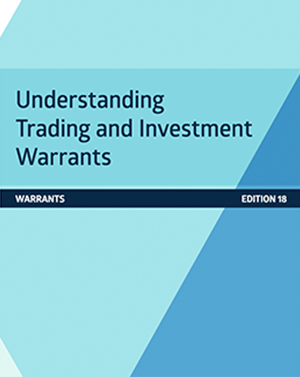Trade ASX Warrants with Sequoia Direct
ASX Warrants are a form of listed derivative product which enables you to gain exposure to the performance of an underlying instrument. Warrants can be issued over a range of instruments including shares, indices, ETF’s, currencies and commodities.
In order to trade warrants, you will need to complete and sign a Warrant Client Agreement Form and have sufficient funds in your nominated cash account or alternatively linked to your nominated Margin Loan account. ASX does not permit short selling of warrants. Warrants are settled on a T+2 basis in the same was as ordinary shares
One of the advantages of using Sequoia Direct is our support for active traders. On completion of each trading session all your trades executed for each warrant are aggregated and booked at the average price. Confirmation is then emailed to you detailing the type, quantity and costs associated with this via a contract note.
Benefits of Warrants
Most warrants offer some degree of leverage (internal link to Leverage in Glossary). This can range from negligible leverage to a high level of leverage, depending on the type of warrant. Some warrants, such as structured investment products, effectively have no leverage and generally speaking, investment-style warrants offer less leverage than trading-style warrants.
If a speculator believes that the value of a particular asset will rise in the future they could purchase a deliverable call warrant over the asset. Purchasing a leveraged warrant costs less than purchasing the underlying asset. There is, however, the risk that the warrant will be worthless at the expiry date.
Holders of instalments are entitled to the full dividends and franking credits. This income stream is accelerated as the holder only pays a fraction of the share price upfront. If the share price is $10 and pays a 50c dividend, this would give holders a 5% yield, while an instalment worth $5 would entitle the instalment holder to the same 50c dividend generating a 10% yield.
Equity and index put warrants allow you to protect the value of your portfolio against falls in the market or in particular shares. Put warrants allow you to lock in a selling price for the underlying instrument. Protecting your position in this way is called hedging.
Some warrants, such as index and basket warrants, offer you the opportunity to profit from movements in the market or in a sector without necessarily owning a large portfolio, which effectively tracks the market or sector. International index warrants, international equity warrants and currency warrants allow you to gain exposure to overseas and other markets.
Some warrants, such as instalments and endowments, offer tax effective benefits to investors. The disclosure document will contain information on tax considerations.
Key Differences between Warrants and ETO’s
- The terms of ETOs are standardised and are set by ASX, whereas the terms of different warrant series are set by the issuer and can be quite diverse.
- Unlike ETOs, you cannot write warrants and there are no margin payments associated with warrants to cover the risk of financial loss.
- Settlement of warrant trades occurs through CHESS in the same manner as share transactions are processed.
Useful Information
Understanding Trading and Investment Warrants
Warrants are financial instruments issued by banks and other institutions and are traded on ASX. They are very broadly split into investment-style products and trading- style products. Warrants are a form of derivative – that is, they derive their value from another ‘thing’ (underlying instrument)

